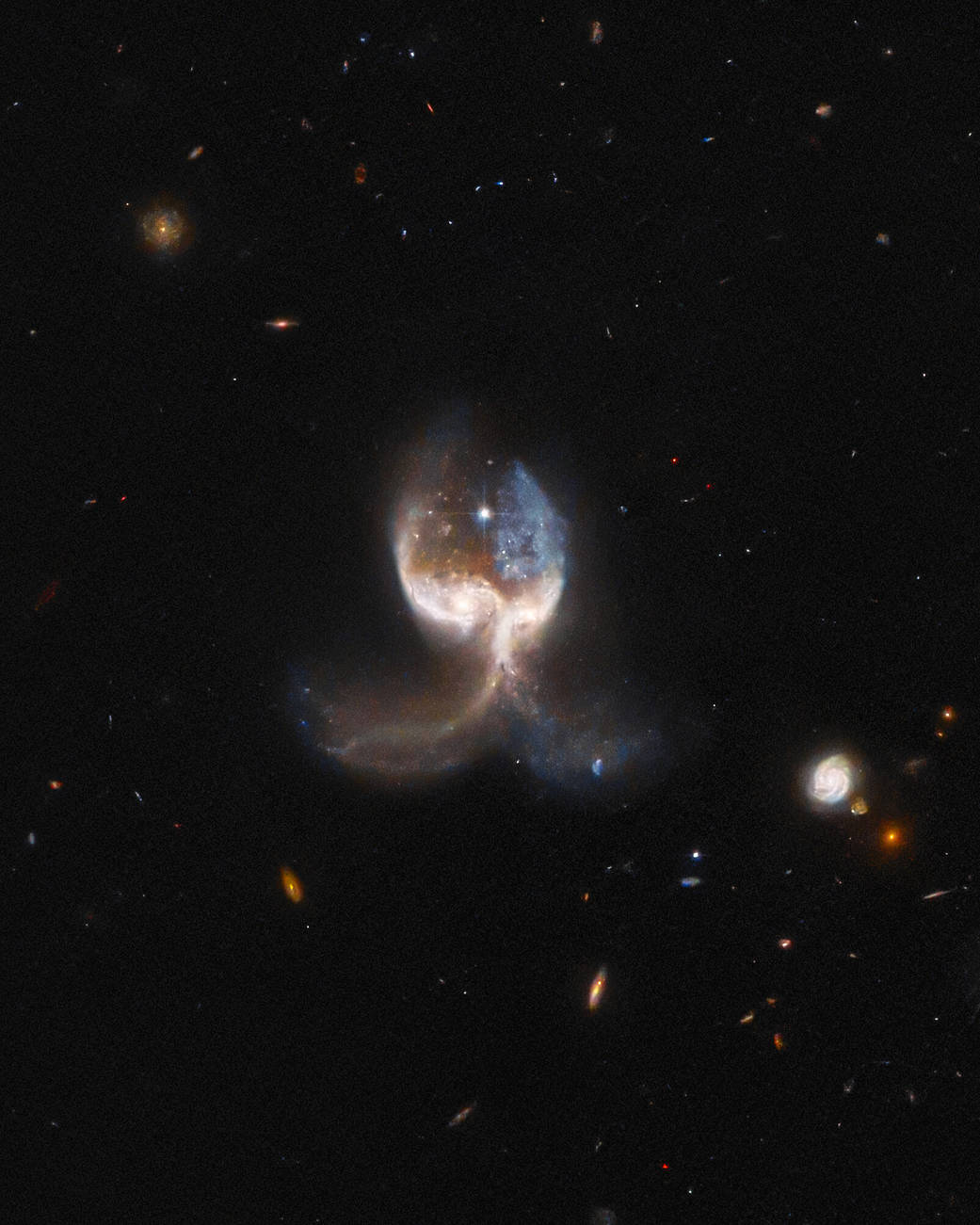This Hubble Space Telescope image features two merging galaxies in the VV-689 system, nicknamed the Angel Wing. Unlike chance alignments of galaxies, which only appear to overlap when viewed from our vantage point on Earth, the two galaxies in VV-689 are in the midst of a collision. The galactic interaction has left the VV-689 system almost completely symmetrical, giving the impression of a vast set of galactic wings.
“Zoo Gems,” interesting galaxies from the Galaxy Zoo citizen science project is a crowdsourced program and relies on hundreds of thousands of volunteers to classify galaxies and help astronomers wade through a deluge of data from robotic telescopes. In the process, volunteers discovered a gallery of weird and wonderful galaxy types, some not previously studied. A similar, project called Radio Galaxy Zoo: LOFAR is using the same crowdsourcing approach to locate supermassive black holes in distant galaxies.
Image Credit: ESA/Hubble & NASA, W. Keel; Acknowledgment: J. Schmidt
Text Credit: ESA
这张哈勃太空望远镜拍摄的图像显示了VV-689星系中两个正在合并的星系,昵称为天使之翼。与仅从我们在地球上的有利位置观察时才出现重叠的星系偶然排列不同,VV-689中的两个星系正处于碰撞之中。星系间的相互作用使VV-689星系几乎完全对称,给人一种巨大的星系之翼的印象。
“动物园宝石(Zoo Gems)”,来自银河动物园公民科学项目的有趣星系是一个众包项目,依靠数十万志愿者对星系进行分类,并帮助天文学家通过机器人望远镜获取大量数据。在这个过程中,志愿者们发现了一系列奇怪而奇妙的星系类型,其中一些以前从未被研究过。一个类似的名为“射电星系动物园(Radio Galaxy Zoo)”的项目:LOFAR正在使用同样的众包方法来定位遥远星系中的超大质量黑洞。
图片来源:ESA/Hubble & NASA, W. Keel; 致谢:J. Schmidt
文字来源:ESA



